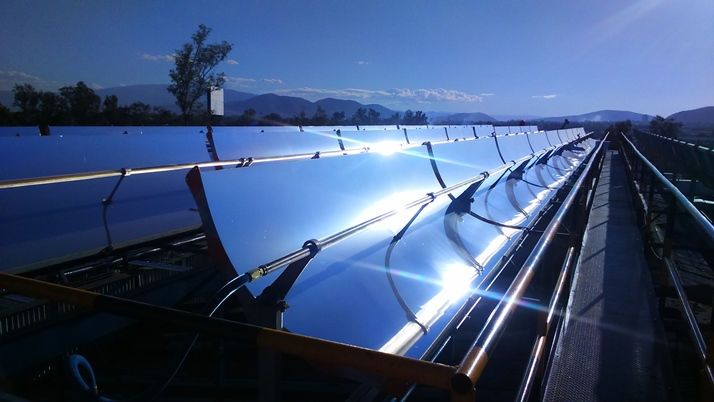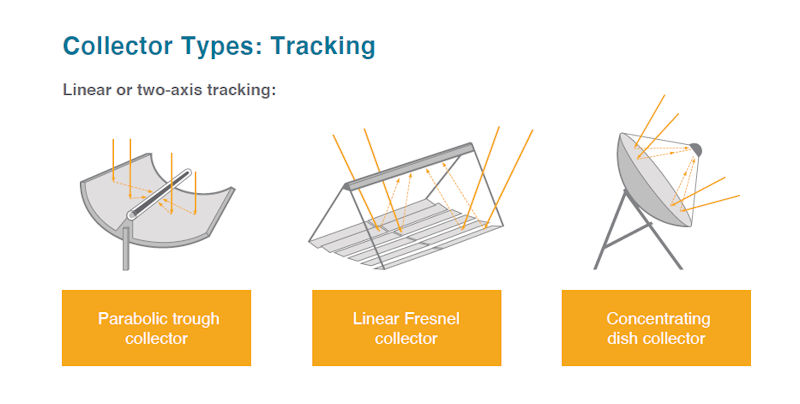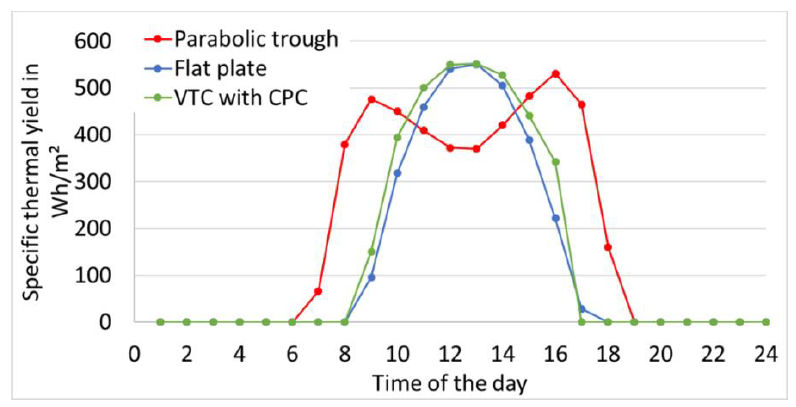Task News
Posted: May 4, 2023

Photo: Inventive Power
The IEA Solar Heating and Cooling Programme (IEA SHC) recommends the factor of 0.7 kWth per square metre of aperture collector area for the conversion of area to power for statistics on concentrating collectors. This is an important step for international market statistics about new solar heat capacities. So far, the factor 0.7 kWth/m² is only used for non-tracking collectors, following a recommendation published by IEA SHC in 2004 (link to https://www.iea-shc.org/Data/Sites/1/documents/statistics/Calculation_Method.pdf.) However, sales of concentrating collectors are growing worldwide and also need a conversion factor to account for this dynamically developing market segment in global market statistics. Scientists from IEA SHC Task 64 on Solar Process Heat outline the application of the factor for concentrating collectors in an 8-page Technical Note published on https://www.iea-shc.org/Data/Sites/1/media/documents/statistics/calculation-method-for-tracked-concentrating-collectors.pdf
According to Dirk Krüger from the German Aerospace Centre and Peter Nitz from the Fraunhofer ISE, the two main authors of the Technical Note: "For some solar thermal systems, only the area and no power is specified. That's why this conversion factor is so important. We need the installed thermal power of all systems in kW or MW so that solar thermal energy is clearly visible in international statistics."
The Task 64 experts jointly recommend using 0.7 kWth/m² "uniformly for the following concentrating collector types: single-axis tracking parabolic troughs and linear Fresnel collectors as well as double-axis tracking systems such as parabolic dishes and Fresnel lens collectors. The conversion factor, however, is not meant to be applied to tower plants, as this technology was not checked and included in the assessment."

The main concentrating collector technologies for which the new conversion factor can be applied.
Source: Solar Payback 2017
There is growing interest worldwide in solar heat solutions providing more than 100 °C. In 2022, already 16 % of the collectors installed for solar process heat were concentrating variants. The market will see strong growth in the coming years as more multi-MW plants come online, like the two new systems for Heineken breweries in Spain with 30 and 3.5 MW systems and the 77 MW system in China for a tourist resort.
However, it is important for the IEA SHC Task 64 scientists to emphasize that this conversion factor should only be used for calculations of market statistics. For individual projects, planners can, of course, specify individually the peak power in relation to the aperture area. This value can differ from 0.7 and will reflect the operating parameters and the irradiation level on-site. The aperture area basically represents the active area through which solar radiation enters the collector and is defined in detail for different concentrating collector types in the Technical Note.
Calculating the conversion factor for seven concentrating collectors
What was the procedure used by the Task 64 scientists to find a suitable conversion factor? They gathered performance data for seven different established concentrating collectors. Then they defined standard operating parameters, such as a direct radiation of 850 and 1,000 W/m2, an operating temperature of 100 °C and an ambient temperature of 20 °C. For these conditions the scientists calculated the thermal power of the different collector types. Then they determined the resulting conversion factor for each collector type, which varied between 0.55 and 0.82 kWth/m2 depending on the two predetermined irradiation level and collector technology.
The results show that the averaged conversion factors for the two irradiance levels (0.59 and 0.70 kWth/m2 for 850 and 1,000 W/m² respectively) indicate a slightly lower factor than the one of stationary collectors. This slightly lower peak power of concentrating collectors reflects the fact that higher temperatures are delivered.
“But tracking collectors compensate for the lower peak output with longer operation times in the day,” explained Krüger. He points to the day profile in Figure 1 which shows the earlier start of a tracked parabolic trough in the morning and the later stop in the evening compared to non-tracking collectors. “This observation finally led us to propose the conversion factor of 0.7 for concentrating collectors as well,” added Nitz.
This approach is clearly confirmed by the annual output of different solar collector types. “Assuming operation temperatures of 50 °C for flat plat collectors, 75 °C for vacuum tube collectors, and 100 °C for parabolic trough collectors, the annual output per aperture area of all three technologies is in the same range”, highlights the Technical Note.
“So if the different collector types achieve close to the same energy output per square metre aperture area when operated under typical conditions for that collector, it makes sense to use the same conversion factor for tracking and non-tracking collectors,” Krüger concluded. This reasoning also convinced the Executive Committee of the IEA SHC, which agreed to the Technical Note during its meeting in December 2022.

Figure 1: Profile on 14th September for the climate of Potsdam, Germany (Meteonorm 7.3), at 75°C and a north-south axis for the parabolic trough collector.
Website of organisations mentioned in this news article: